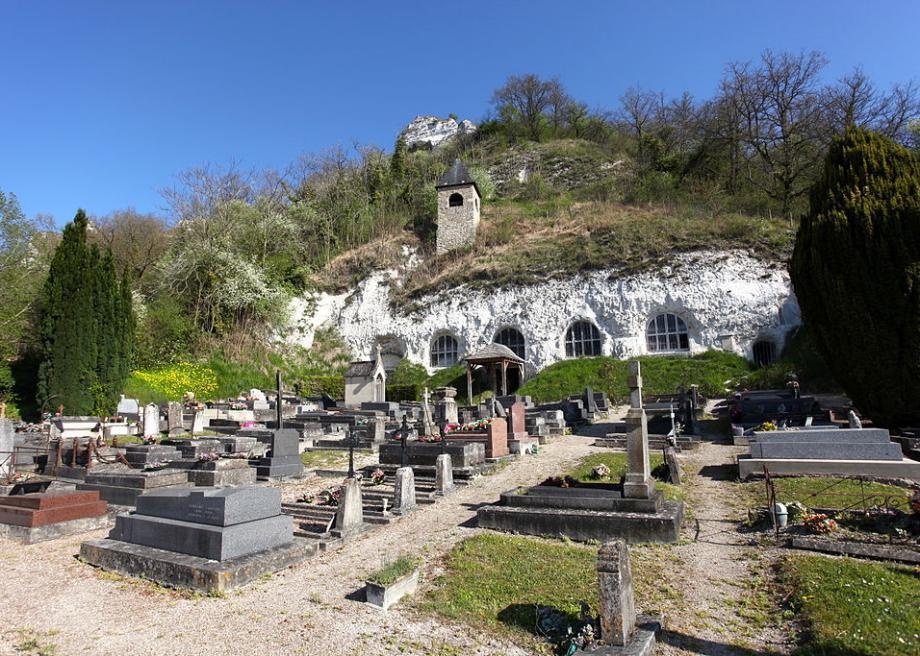Atlas Obscura on Slate is a blog about the world’s hidden wonders. Like us on Facebook and Tumblr, or follow us on Twitter.
Haute-Isle has been settled since the prehistoric age, and for most of that time its inhabitants lived in caves. Right up to the 19th century, in fact, most people in this rare troglodyte (that is, cave-dwelling) village lived in what they called “boves,” which were homes hollowed out of the white chalk cliffs rising above the Seine river valley.
Thus, when the town became an independent parish in 1670, it didn’t take long to decide how they would build their parish church.
The construction—or rather, excavation—of the Church of the Annunciation was financed by one Nicolas Dongois, a local bigwig and bureaucrat who was instrumental in elevating the status of Haute-Isle. Finished in 1673, the church has a main body roughly 20 meters long and 20 meters wide, an arched ceiling about 8 meters high, four simple windows carved into the exterior “wall,” and a small steeple built on top of the cliff.
While generally light on ornamentation, the interior contains a richly detailed, carved wooden screen (dividing the nave and the choir) and altar that are remarkably beautiful. Made in the late 17th century, these two lovingly adorned pieces were originally intended for the Palais du Justice in Rouen. The interior also features a tondo above the altar from the same time period.
Due to significant deterioration, the Church of the Annunciation had to close in 1999. Thanks to a considerable restoration effort, it is once again in use as parish church today; however, there is much work yet to do, which will take a long time for a commune of only 330 inhabitants to finance and complete.
The original cave houses of Haute-Isle can still be seen today, but virtually none of them are used as living quarters anymore. Conventional houses finally came into use in the little town, and now the old boves are mostly used as sheds or garages. Many of them are simply abandoned.
Contributed by Atlas User, Christine Williamson
If you liked this, you’ll probably enjoy Atlas Obscura’s new book, which collects more than 700 of the world’s strangest and most amazing places: Atlas Obscura: An Explorer’s Guide to the World’s Hidden Wonders.
